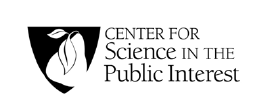Food marketing in other countries
Nations1 worldwide are grappling with the issue of junk-food marketing to children, and many countries have established policies to limit children’s exposure to marketing. The World Health Organization’s (WHO) Global Strategy on Diet, Physical Activity and Health discourages messages that promote less healthful dietary practices and encourages positive healthful messages in food and beverage advertisements aimed at children.2 In 2006, WHO called for national action to protect children from marketing by substantially reducing the volume and impact of the commercial promotion of junk foods.3

Bans on all television advertising to children
Norway, Quebec (Canada), and Sweden have banned all advertisements during children’s television programming.
Limits on all television advertising to children
Over 30 countries, including many in Europe, Australia, Canada, Malaysia, Korea, and the Russian Federation, have national laws that set some limit on television advertising to children. The laws, or clauses within them, most often include limits on advertising at certain times or on certain types of programming, or on using specific marketing techniques such as cartoon characters.
Limits on television food advertising
Among countries that permit television advertising to children, none bans or restricts all food advertising to children, though some countries do have regulations specific to food ads. Such regulations seek to limit advertisements that promote unhealthy diets to children, prohibit misleading advertisement of foods, or promote good dental health to children. The United Kingdom is the first country to establish nutrition standards for what may be advertised to children. In Nigeria and Thailand, all ads for food must be approved by a national governmental body. Australia, the Philippines, Thailand, and the United Kingdom have regulations that prohibit false advertising regarding the nutritional quality of foods, and French law requires that messages on the benefits of balanced diets accompany television and radio food ads. Also, China, Denmark, Finland, Malaysia, Korea, Romania, and the United Kingdom have regulations that encourage balanced diets and/or prohibit the presentation of snacks as replacements for meals. Australia is considering a ban on junk-food television advertising to children.
Self-regulation: Foxes guarding the henhouse
Many countries have self-regulatory processes by which industry establishes and then claims to follow its own guidelines. The Netherlands and France have detailed guidelines specific to food advertising but most other countries’ guidelines apply generally to all marketing to kids. There is little evidence that self-regulation is effective. Laws have the power of governmental enforcement behind them. Self-regulation usually means limited enforcement capabilities and softer penalties, such as publicly “shaming” the offending company through a press release or encouraging media companies to refuse future advertising space.
“There is in fact plenty of room for advertising children’s products quite legally on TV in Sweden. You are free to let the commercials speak to parents, grandparents or any other grown-up.” Axel Edling, Consumer Ombudsman, Sweden, 1999
Marketing in schools
Belgium (French community), Quebec (Canada), Portugal, Vietnam, and certain areas of Germany prohibit all in-school marketing. Finland, France, Greece, and Luxembourg prohibit in-school marketing unless it is approved by a school official (or a parent in Finland) or unless it has an educational purpose. A handful of countries regulate food product sales on campus, which is one key way by which companies market their products to children.
The effects of limiting food marketing to children
There are limited data available on the effect of bans and other limits on marketing. A 2005 study found a link between junk-food advertising to children and the risk of overweight, based on data from the USA, Australia, and eight European countries.4 In a 1990 study in Montreal, Quebec, English-speaking families, who were exposed to children’s advertising on American television channels, had more children’s cereals in their homes than did French-speaking families, who only watched Quebec channels on which advertising to children was banned.5 In addition, the proportion of children who are overweight has increased around the world, but the increase seems to have been slower in countries with limits on junk-food marketing.6
However, even in countries with bans or restrictions on television advertising, junk food is still marketed to children. It is difficult to limit television ads because of the proliferation of satellite channels that allow unregulated advertising from countries without restrictions. In addition, advertising represents only about 20% of food companies’ marketing budgets.7 Even with limits on TV advertising, children are still heavily marketed to through product availability (in grocery stores, restaurants, and vending machines), web sites, schools, packaging, contests, premiums, etc.
For more information see www.cspinet.org/nutritionpolicy. 
References
3. World Health Organization. Marketing of Food and Non-Alcoholic Beverages to Children: Report of a WHO Forum and Technical Meeting. Geneva: WHO, 2006. [Online]. Available: http://www.who.int/dietphysicalactivity/publications/Oslo%20meeting%20layout%2027%20NOVEMBER.pdf.[accessed December 12, 2006].
4. Dibb S, Lobstein T. Evidence of a possible link between obesogenic food advertising and child overweight. Obesity Reviews, 2005, 6:203-208.
5. Goldberg ME. A quasi-experiment assessing the effectiveness of TV advertising directed children. Journal of Marketing Research, 1990, 27:445-454.
6. Position Paper of the International Obesity Task Force. London: European Association for the Study of Obesity, 2002.
7. GMA Forum. Cannondale Trade Promotion Study 2005. Saying No to the Status Quo. Second Quarter, 2005. Referenced in: Institute of Medicine. Food marketing to children and youth: Threat or opportunity. Washington: National Academies Press, 2005.
